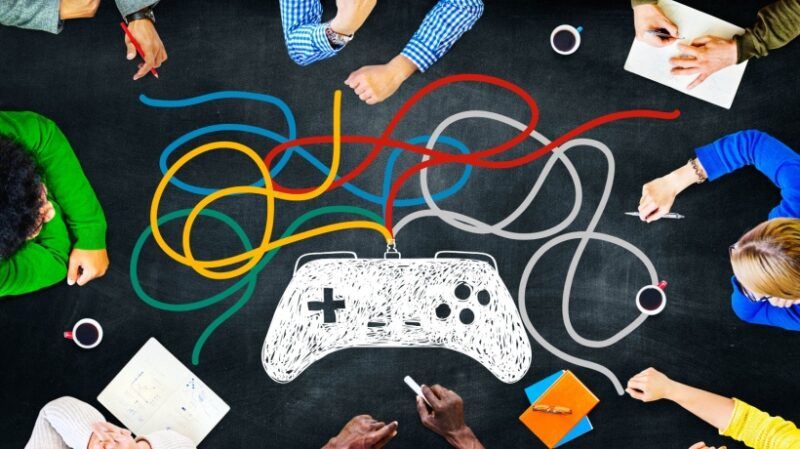
How to build a gamified workplace experience that works
What if work felt more like a video game? Collect points by completing daily tasks, earn badges for successful presentations, and move up the company leaderboard just by meeting deadlines. What if you could even get ranked? This is called gamified work experience. But what is this approach? Gamification is the application of the fun, competitive, and challenging elements of games to the workplace. This includes levels, rewards, challenges, and leveling up while achieving work goals. Turn boring and repetitive tasks into exciting and interactive ones.
Gamified workplace experiences are based on psychology. When you earn points or reach milestones, your brain receives dopamine, a chemical that makes you feel good. It’s the same feeling you get when you complete a level in your favorite game. As a result, your intrinsic motivation is satisfied and you want to continue making progress. If you’re ready to transform your office into a rewarding experience, let’s dig deeper and see how you can make it happen.
Why gamification is important in the workplace
Improved productivity
People love to win, and gamification taps into our natural desire to achieve. Give your employees point systems, leaderboards, and even badges for achieving goals, and they’ll suddenly feel more motivated. Deadlines become challenges and boring tasks become another level to clear before earning the next reward. This gives staff new reasons to complete projects and attend training sessions, motivating them to go the extra mile.
Enhanced engagement
Gamification turns everyday work tasks into experiences that employees look forward to. They do more than just submit reports and meet deadlines. Just like in your favorite games, you’re unlocking achievements. The best part is that this fights burnout, a common problem in the workplace. When work feels like a game, employees are excited, focused, motivated, and more committed to their roles.
Improving teamwork
A gamified workplace is a great place for collaboration as teams meet deadlines and complete projects together. For example, if you want your marketing team to hit monthly KPIs, assign team points each time they hit a desired number or percentage, and set up group rewards for hitting big goals. Not only does it allow everyone to participate, but it also allows everyone to collectively experience the fruits of victory.
skill development
Adding game elements like points, levels, and rewards to tasks turns them into opportunities for learning and growth. Therefore, learning new skills is exciting and employees want to do it more and more. As mentioned above, it is important to achieve milestones, collect virtual trophies and get dopamine. In other words, gamification not only promotes continuous learning, but can also be fun and addictive.
How to turn work into play with a gamified workplace experience
find the right task
The truth is that some tasks are boring. Therefore, you should start by identifying all the tasks that need to be changed. Usually these are repetitive or non-involved. For example, if you have a tedious data entry process, turn it into a leaderboard challenge and help your team members collect points for accuracy and speed. Similarly, if your staff is required to complete compliance training, give them badges for each module they complete and prizes for those who complete them all.
Selection of game elements
Various elements can be used. First, there is a point. Add when your team achieves a goal or completes a training session, but make sure to keep it relevant. For example, points for attending a meeting are not ideal. Next is the badge. These can be used to achieve goals, complete projects, and assist colleagues. Weekly challenges to brainstorm the best ideas or achieve specific goals then motivate people. Finally, there’s the level. Levels instantly show staff progress and increase satisfaction with work tasks.
Promote healthy competition
Leaderboards can easily go from fun and motivating to stressful. Therefore, when using leaderboards, make sure that the same people are not always ranked at the top. Instead, think of it as a friendly battle where employees compete for their own advancement. By introducing levels and milestones, you can give everyone a goal. That way, no one feels like they’re always competing at the top with the same people. Ultimately, it will be about personal improvement rather than showing off.
Add a reward system
When you gamify your workplace, you need rewards to keep employees coming back. However, not all rewards are equal. There are tangible rewards like gift cards and extra time off, and intangible rewards like recognition. Both are important for making gamification really work. Visible rewards give employees an instant sense of satisfaction. However, it’s not just about giving free rewards. Make sure they are meaningful. For example, personalized rewards can go a long way in keeping morale high. This could mean additional time off for employees who have travel plans. And don’t forget to recognize. People want to feel seen, valued, and appreciated, and even small acts can increase motivation.
ensure inclusivity
If you want to keep everyone motivated, make sure your gamified workplace experience is designed to accommodate all personalities, skills, and ways of working. Start by rewarding yourself for personal milestones as well as work tasks. Because while someone may excel, others may have a hard time matching up. Next, consider creating different “levels” of engagement. Not everyone wants to be on top, and that’s okay. Instead of common challenges, offer different avenues where people can choose the one that suits their strengths. And remember, everyone needs to have access to and understand gamified experiences. If your tools and rules are too complex, you’ll lose people’s attention.
achieve balance
Gamification is a productivity enhancer, not a distraction. That’s why you need to find a balance between having fun at work and completing tasks. It’s great to earn points for meeting deadlines or earning badges for learning new skills, but if your system is starting to take up too much time outside of your workday, you may need to make adjustments. there is. Set clear boundaries. Give people achievable tasks that not only have real consequences, but also add a game-like element. You can also create mini-challenges, offer rewards for meeting goals, and let employees see their progress in real time, all in moderation.
conclusion
Making your workplace an exciting experience is easier than you think. Start by adding some fun elements and think creatively about what fits your team’s needs. It’s also important to not be afraid to experiment and adjust. The key is to make work feel less like a chore and more like a game everyone can have fun playing. Follow our tips to make your work more fun, engaging, and rewarding.


